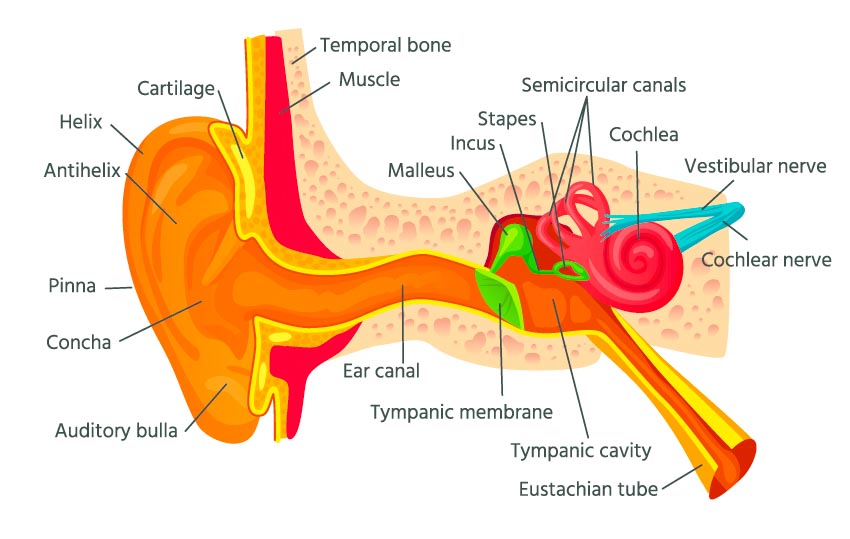
Acupuncture is effective for the treatment of Meniere’s disease. Researchers at Zunyi Medical University Affiliated Hospital conducted a clinical trial comparing the efficacy of a standard pharmaceutical treatment regimen with the addition of acupuncture to that regimen. The latter outperformed the standard regimen regarding hearing loss, speech discrimination score, and blood flow at the common carotid arteries. [1]
Outcome indicators, including Dizziness Handicap Inventory (DHI), Tinnitus Handicap Inventory (THI), auditory threshold, and average blood flow velocity of the left and/or right vertebral artery, were documented before and after treatment. Upon completion of the procedure, DHI scores in both groups declined, but the score in the acupuncture group was significantly lower at 30.34 ±5.32. The same is true for the THI scores, with the acupuncture group decreasing from 56.80 ±4.57 to 28.39 ±2.411 and the pharmaceutical control group from 57.63 ±4.79 to 40.85 ±3.34.
Auditory threshold also saw a more marked increase in the pharmaceutical and acupuncture group from 33.08 ±3.27 to 49.8 ±6.69, compared with the pharmaceutical control group (from 33.15 ±3.13 to 42.16 ±5.84). The study also used a three-level symptom scoring system that measured a 91.38% total efficacy rate in the acupuncture group. Six months after the completion of treatment, the relapse rate was at 5.17% in the acupuncture group and 18.89% in the control group.
From June 2016 to June 2018, aA total of 116 senior Meniere’s disease patients were admitted into the study. The patients were randomized into a pharmaceutical control group and a pharmaceutical plus acupuncture group, each consisting of 58 cases. No statistical distinctions concerning age, gender, course of disease, body weight, or affected area that might interfere with the research were observed among the patients. Those with severe cardiovascular diseases, liver and kidney disorders, peptic ulcers, or bronchial asthma were excluded from the study.
The pharmaceutical control group was administered 0.3 mg mecobalamin (Jiangsu Sihuan Pharmaceutical Company, H20080290) and 12 mg betahistine mesylate (Weicai Pharmaceutical Corporation, H20040130), three times a day. The treatment was administered for three months.
Patients in the acupuncture group, in addition to the above treatment, received acupuncture at the following points:
- SI19 (Tinggong)
- GB20 (Fengchi)
- GV20 (Baihui)
- ST40 (Fenglong)
- LI11 (Quchi)
- KD3 (Taixi)
- ST25 (Tianshu)
- ST36 (Zusanli)
- LV3 (Taichong)
- LI4 (Hegu)
Needles (0.25 mm × 0. 25 mm, 0.3 mm × 40 mm) were used for the procedure with a mild reinforcing-attenuating method. Needles were obliquely inserted on Baihui to form a 45 degree angle with the surface of the skin. Maximum needling length was 20 mm. Hegu, Tinggong ,Taixi, and Taichong were inserted perpendicularly. Maximum needling length was 20 mm. For Zusanli, Quchi, Tianshu, and Fenglong, needles were inserted perpendicularly with a maximum needling length of 30 mm. Patients underwent the above procedure on Tuesdays and Fridays for three consecutive months. The researchers conclude that the addition of acupuncture improves the results of regular pharmaceutical treatment.
Reference:
[1] Ding Dan, Deng Yuan, Wang Shifei, Effects on Patients’ Dizziness Level and Relapse Rate of Treating Meniere’s Disease with Acupuncture Combined with Mecobalamin and Betahistine Mesylate, Chinese Journal of Gerontology, Vol. 41, September 2021.


